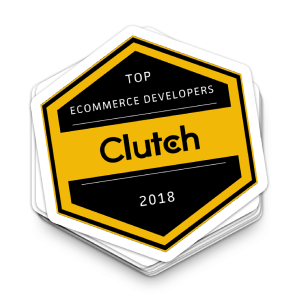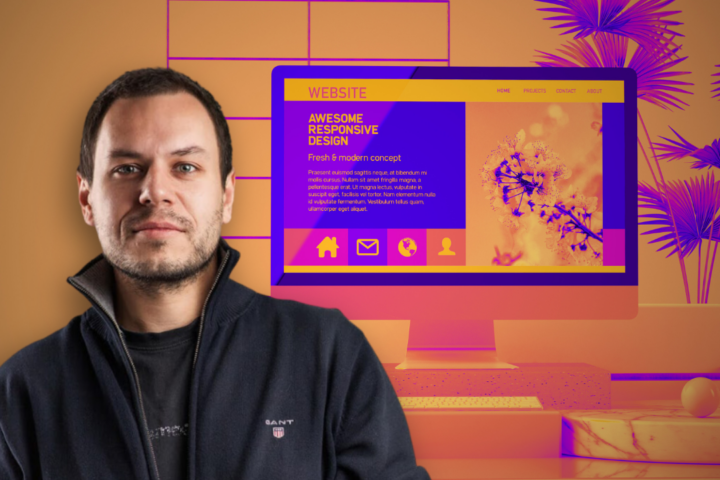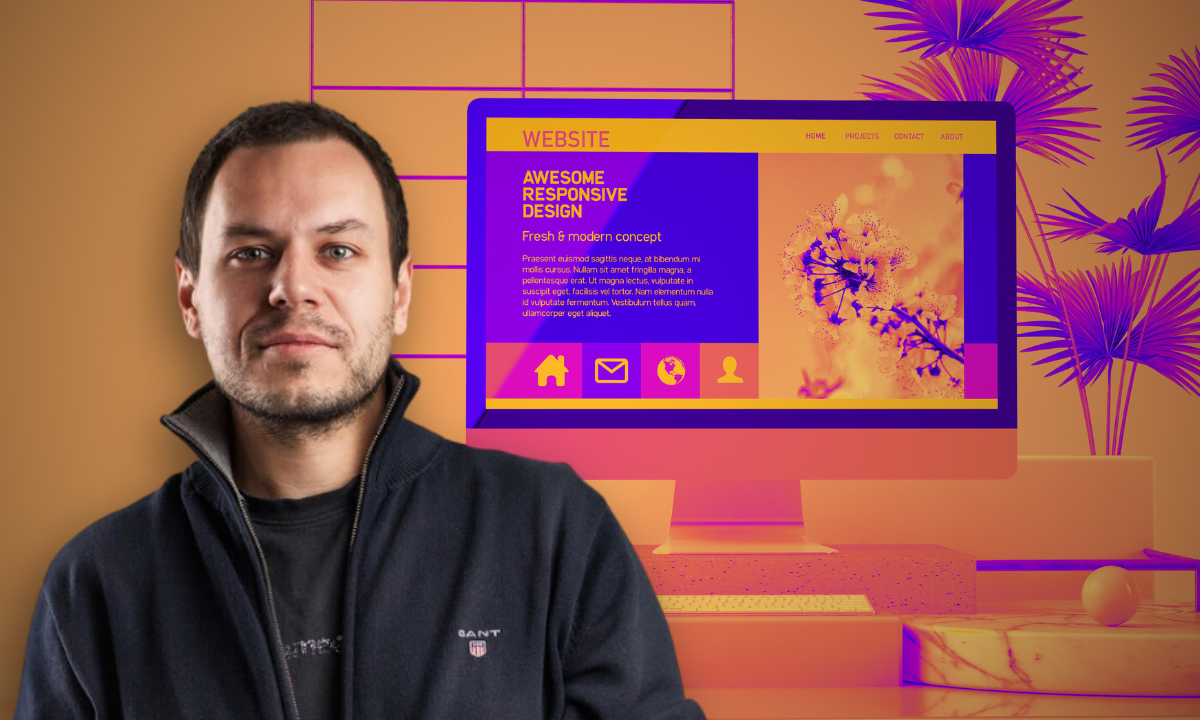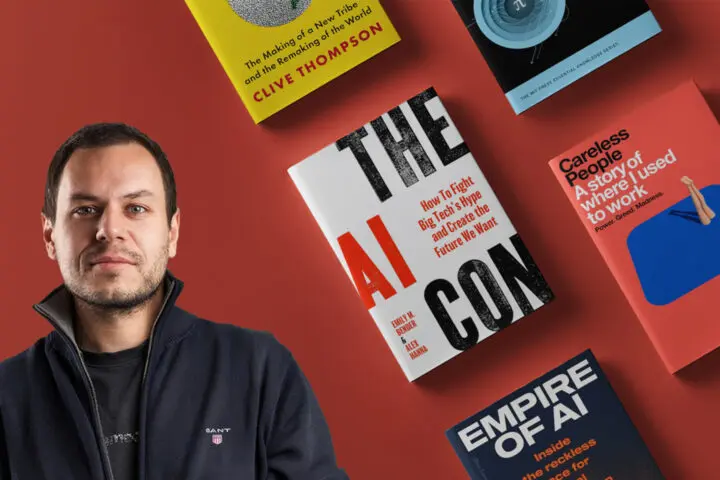The role of web builders, low-code, no-code and Gen AI tools in web development
Kind folks from Netokracija did an interview with me on the topic of current Gen AI craze, web builders and similar no-code tools. Here’s the uncut version in English – more in a Q&A form
How do you view the current state of web development in terms of supply and demand?
Media creates the impression that tech is in “big trouble” and that it’s better to work on ceramic tiles than on code. However, numbers suggest that the industry is actually sobering up from the unrealistic and rushed pandemic state.
For instance, the MAAMA clique (Microsoft, Apple, Amazon, Meta, and Alphabet) has hired over 900,000 people to keep up with the massive IT expansion from 2020 to 2023. Therefore, it’s normal now to see a hangover in the form of layoffs in big companies – and the shutdown of startups that ran out of financial cushion.
As a result, there’s an increasing influx of developer resumes. Before and during the pandemic, we would receive one or two resumes a week, while now we receive up to five times more. I think this is a consequence of the mentioned shutdown of startups or projects, but also a much-needed leveling of the market where companies can no longer employ “juniors at senior salaries.”
However, looking at the overall situation – the state of the IT industry is better than a few years ago. BigTech employs 2.16 million people, which is 71% more than before the pandemic. Also, this group generated $1.63 trillion in 2023, which is 81% more than five years ago.
This does not necessarily mean that the balance of supply and demand will be disrupted. People forget the fact that the world needs more and more “software” – not less – as it turns out that business digitization is happening really slowly. For example, eCommerce accounts for only a fifth of the total retail volume, and the “cloud,” which has been hot for almost two decades, has only captured 25% of the enterprise sector.
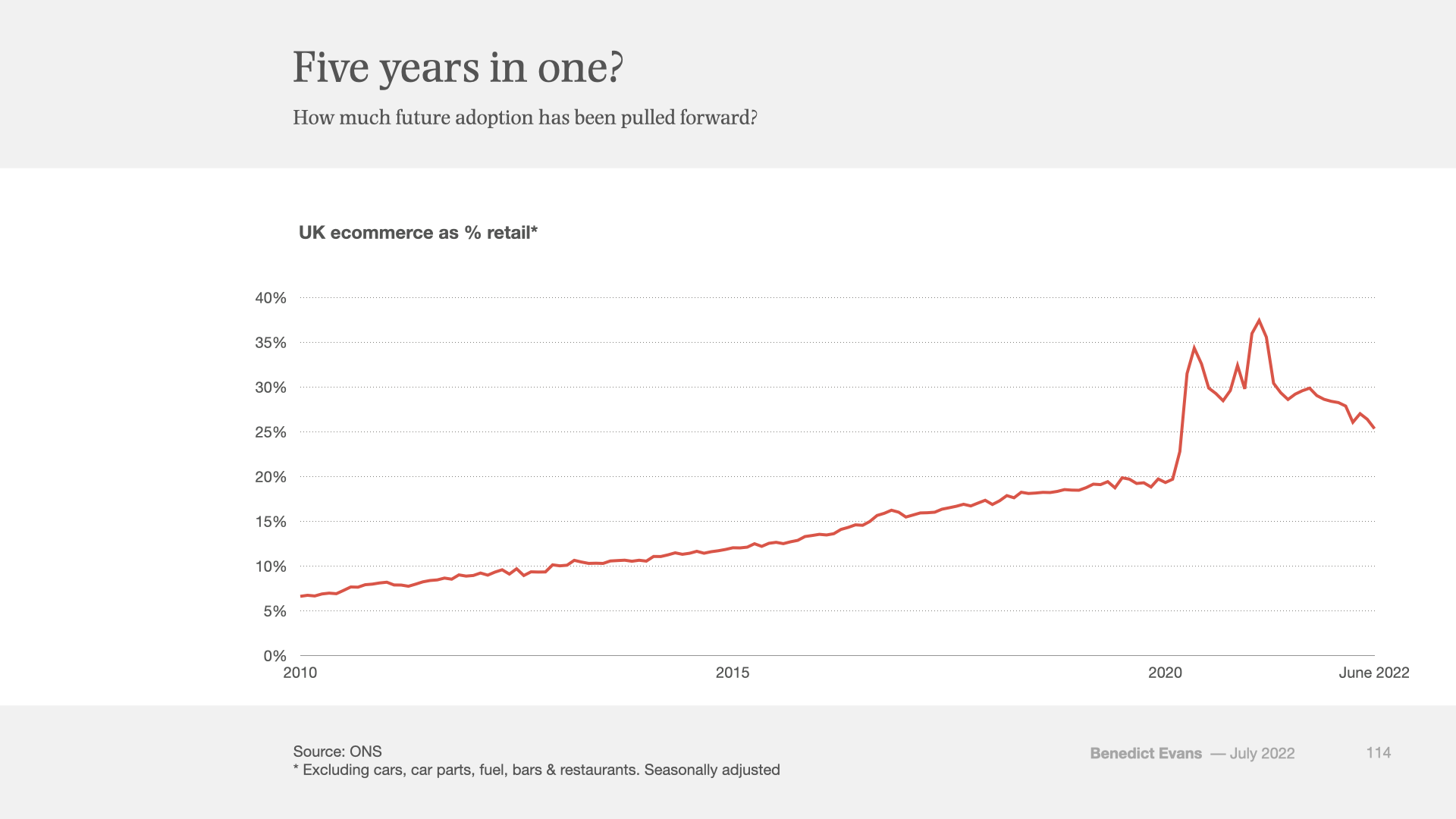
Such macro shifts can also be reflected in the local market. Neuralab, during the pandemic, received a huge number of inquiries for new projects, but the seriousness of those contacts was below average due to the previously mentioned rush of clients. Now the number of inquiries has dropped to the level of 2019, and the quality of projects and budgets is much higher than during the pandemic.
The seriousness of inquiries reflects a return to the normal adoption curve where the drama around digitization has calmed down, and clients have realized that they need to work on long-term online strategies. An additional Croatian specificity is that by the end of 2026, there will be an abundance of NPOO funds in the form of vouchers and more complex tech grants – which consequently generates a large demand for local IT service companies.
Websites are sometimes the first and only impression of a company, organization, or individual online. What distinguishes a good impression from an average, generic one? In your opinion, what secret sauce do experts bring?
The fact that a website is the “first impression” is both a blessing and a curse. Web applications are objectively the digital hub and the main factor of the first impression, but this also has negative consequences that online projects are superficially analyzed based on their visual appearance – mostly the homepage, which might not even be part of the main user path.
People are thrilled with generative tools that create various enticing homepages – thinking that such a tool will solve the “problem” of the web; but this is an old story. Our industry has various ready-made templates, WordPress themes, Envato libraries, and no-code generators, a wave started by Bootstrap back in 2011. They have their place in the market in terms of creating decently beautiful generic solutions; however, all experienced designers and engineers know that creating a “beautiful application” is a smaller part of the job – which actually has no correlation with the success of the project.
The superficiality of “visual analysis” is actually a problem for the entire industry since it’s impossible for the untrained eye to perceive how complex a digital product (web project, mobile application, backend system, ERP, etc.) is. The reflection of such a state can be felt by anyone receiving requests like “we want to create a competitor to Facebook with a budget of 5K USD” or even better examples of the current OpenAI Score where users think they will direct a new version of Oppenheimer with a minute of randomized video clips.
It is precisely this “looking beyond the visuals” that makes the difference brought by experts – or at least it should be. A quality team will first deal with the business and content plan, look at possible user flows (user flows) and related conversions; work on integration plans and repercussions with other parts of the business, educate the client about content entry and aspects of search engine optimization, etc., and only then realize the final visual expression that should be the result of business, content, and function, not an “assembled” or borrowed attractive graphic solution.
Do you have examples of (AI) website builders you’ve tried, and would you like to comment on their pros/cons (you don’t have to name them, a general review is also fine)?
Neuralab has been advocating for a while that Gutenberg is a good open-source builder with which one can build low-code or even no-code solutions. It can currently be used in Drupal and WordPress projects, which account for about 65% of the entire CMS market. Interestingly, Gutenberg was created in response to competitors such as Wix or SquareSpace, which have grown at rates of over 200% annually, a topic we’ve already discussed on Netokracija. Trying Gutenberg is a good and free first step to get acquainted with the concept of “website building,” and it can be well combined with generative AI tools.
For example, we edit content through Gutenberg with GPT4 + Midjourney as assistants, but I haven’t noticed that they have become an indispensable part of production. Midjourney helps us in situations where creating graphics through stock libraries or, for example, Unsplash is simply not possible. In other words, Midjourney has expanded our creative options in the direction of having a new 3D render artist. Also, it often happens that designers manually refine GenAI graphics within Figma or Photoshop, especially if the image includes a textual component…
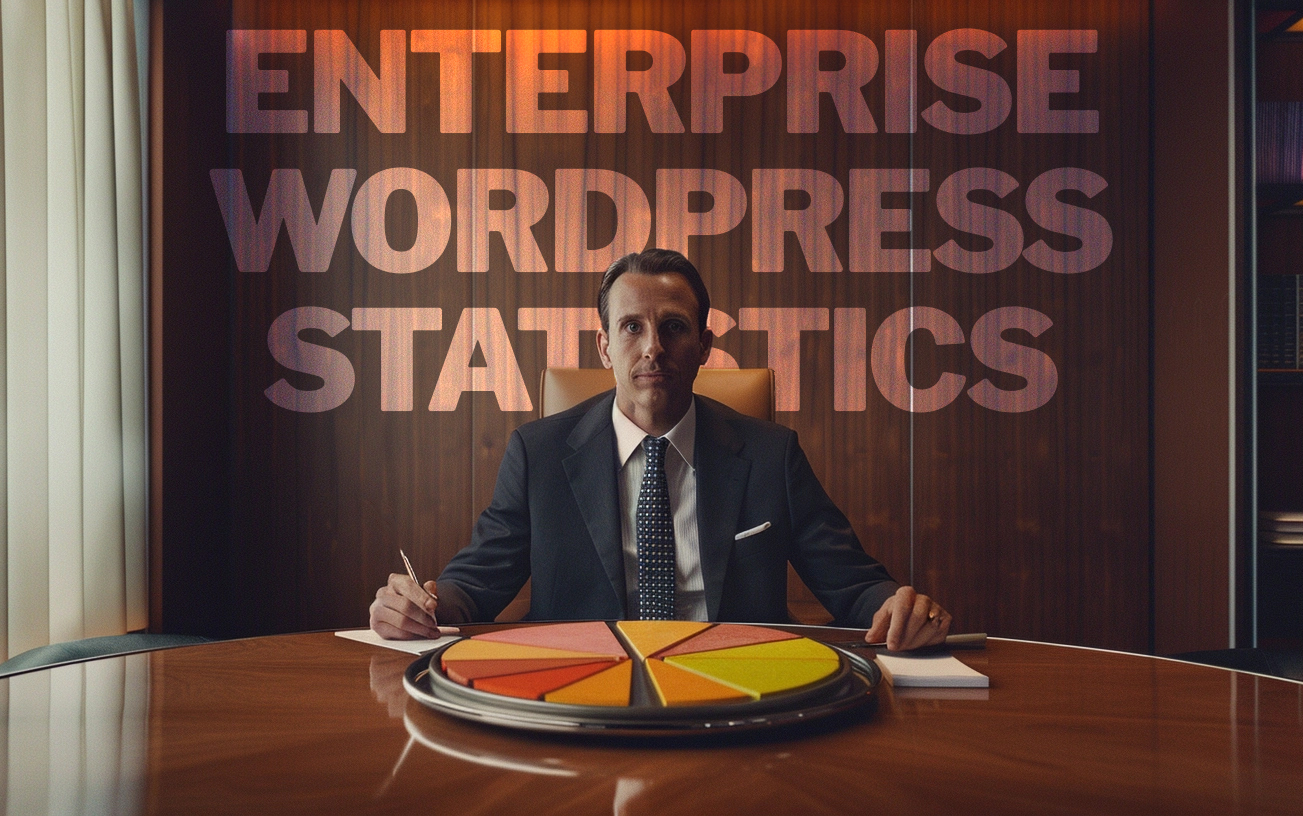
We use GPT4 for creating textual content, but honestly, I haven’t noticed that the team uses it often or on a stable basis. Recent research goes so far as to claim that GPT is completely useless even in general life situations, let alone in more complex “office” scenarios. For example, a few days ago, researchers from Penn State University completed an analysis in which GPT4 correctly planned a travel itinerary in only 0.6% of cases. All of the above means that we can forget about some magical automation of producing quality content, which leads me to the reasoning that the quality of the output still largely depends on the energy, time, and effort of human hands.
Among other tools, it’s worth mentioning CodeWP, Jimdo, Unbounce, Framer, or Mailchimp web builder; but my recommendation is to first play with self-hosted WordPress + Gutenberg editor since I think it will become the de facto standard for editing content in the open web world. Especially when you consider new features such as real-time editing and online collaboration between authors.
Could you make a rough comparison according to some of the most important elements (development) of a website, what kind of final result is obtained with a website builder, and what kind when working with (people) experts like you?
The first difference is that experts plan the longevity of the project in terms of upgrades, maintenance, and evolution of the application. Drag & drop builders go against this direction since they often introduce unnecessary code and functionalities into the project itself. The background of this “bloated” state is that builders need to satisfy a broad market and unspecified user experiences, thus containing large amounts of unused code.
The second difference is that experts create user experiences keeping in mind market needs and the end user, not the specific project owner. Namely, many owners will use builders and various Gen AI tools, keeping in mind their personal preferences – and consequently thinking that these personal preferences are equal to market needs. More experienced individuals know that this is rarely the case.
Related to this, the strength that experts bring into a project is their knowledge through more projects and even more importantly – through more verticals (industries) which a client or their internal team simply cannot have, thus looking at the project through too big of a “blindspot”. A typical example is ensuring accessibility so that as many people as possible can have a good user experience. A client simply cannot know all the latest accessibility A11Y rules, as well as other rules, so it’s better to leave such things to experts – especially if there is a legal obligation.
The team that has worked on more projects and through various different industries can tell a client what to implement and more importantly, what not to implement because when IT projects are properly stacked – then care must also be taken on upgradeability, functionality, and sustainability of the entire system.
That is, I would say that “future-proofing” is the most important seasoning that experts bring into a project.
However, not everyone has the possibility to hire experts. Who do you think has room for compromise – to use the possibilities of existing AI or drag-and-drop software, and who doesn’t? Or in your opinion, who should not allow themselves to go below standards, and for whom it won’t make a difference?
Business and content plans should determine whether to go for a ready-made template, Gen AI tool, ready platform, or hiring experts for the project.
The formula is very simple – the cost of building the project should be proportional to the amount of desired revenue that the project should generate. Translated, if you’re building a complex “marketplace” that should connect tens of thousands of buyers and sellers in the style of eBay, then it’s foolish and naive to think that you’ll carry out the entire project with Gen AI tools or a person you contacted yesterday on Fiverr.
The opposite is also true, it’s pointless to hire an agency with several people if you need to make a landing page for selling a book. Between these two extremes, there are a myriad of solutions, and you should always return to the business and content plan which should clarify what kind of project it is – and with what tools it should be made. Neuralab usually conducts discovery workshops that last from about ten to about sixty hours to untangle exactly such dilemmas with clients.
It’s a great moment that today there is a ton of free educational material, mentoring programs, and online communities, so anyone who decides to go the Do-It-Yourself route – won’t have a hard time if they “get stuck” with some tool.
Following the previous question, could you list some of the questions that individuals or companies could ask themselves to more easily analyze what is better or necessary for them?
The first question is how many people within the organization will work on content entry. The more people entering content, the more robust and designed the system must be by experts.
After that, analyze how many types of content need to be entered and maintained. How complex is this content and how does it interact with other parts of the IT system. For example, how are products, images, and documentation entered? Are product prices pulled from an ERP or some CRM system? What is the omnichannel automation and does it connect to any UX? The more complex the picture here, the more important it is to use a more elaborated and organized system.
The third thing to consider, which is also verifiable, is what kind of documentation, support, and community a particular tool, builder, or web system provides. Namely, you can easily find yourself in a so-called Vendor-lock-in and the invested effort, content, and web solution remain “trapped” with a platform or tool that tomorrow puts the key in the lock.
The fourth thing is the legal repercussion of launching some online product on the internet. Today, there are quite robust rules that didn’t exist a few years ago, related to privacy and consumer protection, ensuring accessibility, enabling the return of eCommerce products, and a plethora of other laws. Hiring professional designers, developers, lawyers, and copywriters ensures that your online headquarters meet all the above.
Finally, it’s important to thoroughly study the prices of all systems and their hidden costs. For example, Shopify or Mailchimp Stores may seem simpler and quicker solutions for a merchant than, say, WooCommerce, but owners often overlook the fact that Shopify, Wix, or Squarespace take a percentage of every eCommerce transaction. This also applies to various builders that could limit service packages by the number of users, visits, bandwidth, transactions, revenue, inquiries on the form, etc.
You come from the open-source world, so in the context of related principles, I’m interested in your view on the possibilities offered by various AI, low-code, and automation tools in general – do you see positive aspects in this, that there is greater openness and accessibility of development to a wider circle of people? Why yes/no?
Just as the internet, open source, and the concept of the open web gave all users a megaphone and essentially allowed them to become media, so modern Gen AI tools enable users to more easily become creators and developers.
This is already leading to greater democratization of creation and lowering the barrier to entry into web production. Technology increases the pie by creating new types of interactions and content; but also by enriching old forms, which can best be seen in the example of radio and podcasts.
However, such dynamics do not mean that everyone will become an artist, creator, 3D studio, or developer. The fact that today everyone can be media does not mean that suddenly everyone has become Mr.Beast or Marques Brownlee.
Also, it is evident that web development is experiencing structural changes in terms of how “code” is produced, tested, and implemented, but I think these are mostly positive changes in knowledge availability and training of juniors. It’s easier to talk to GPT than to search for a StackOverflow answer for hours. As for the literal writing of code… that has always been the easier and more pleasant part of engineering work, and I think debugging, integration, analysis, maintenance, upgrading, testing, documenting, and evolving IT systems are far more challenging parts of software engineering. Look at the latest JetBrains report, for example, where it’s clear that writing code is the LAST activity that programmers would give to AI to do.
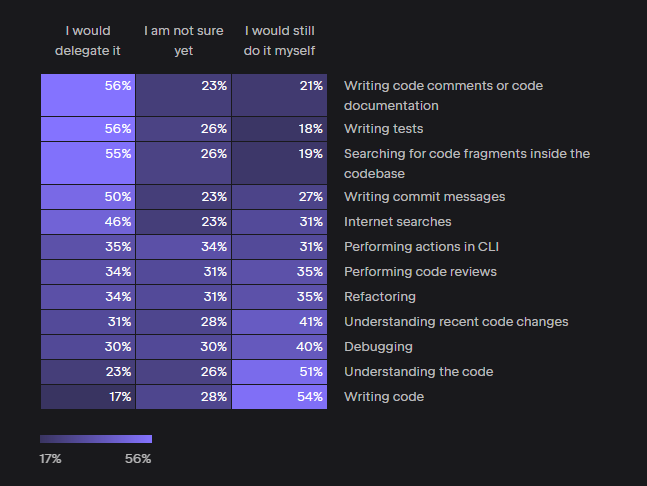
A study was recently published that talks about these changes in how code is written and maintained. They analyzed 153 million changed lines of code, comparing changes made in 2023 to previous years when AI was not as relevant for generating code:
- “Code churn” or the percentage of lines that are discarded less than two weeks after they were written is on the rise and is expected to double in 2024. The study notes that more changes mean a greater risk of mistakes being implemented into production.
- The percentage of “copied/pasted code” is increasing faster than “updated,” “deleted,” or “moved” code. In this regard, the composition of AI-generated code is more similar to the code of developers who thoughtlessly integrate their work into a broader project. Which brings me back to the earlier point that the world will need more software, but also more maintenance of that same software.
Do you see the possibility of some symbiosis between automation and human expertise in the future of web development? Why and how do you think that will (not) work?
The symbiosis between human expertise and various automations has actually been ongoing for decades. Programmers work on increasingly difficult and complex tasks in an increasingly diverse environment, which honestly would not be possible without automation and various tools. For example, Visual Studio had automatic code completion (IntelliSense) back in 1996, and ChatGPT is already used by 77% of programmers.
There’s no room for dramatizing and lamenting the programmer’s job – developers have already wholeheartedly embraced Gen AI tools, and most of them agree on two things – 60% of programmers believe that the dynamics of work will radically change, but also that the world will need even more engineers – which is explained by Jevons’s paradox, about which I’ve already written on Netokracija.
So the question is not whether “it” will work or not (the symbiosis has obviously been working for twenty years) but what tools and automations programmers will use to be more effective in completing newer daily operations. You probably remember the period when “web masters” independently designed, programmed, and maintained projects, something that today must be done by at least three different people or automated SaaS platforms.
Look at the excellent example of the symbiosis between Photoshop, tablets, and generative AI tools where a completely new production flow is clearly emerging.
This is a typical example of industry growth and even more importantly – the flourishing of various specializations, a process that cannot be stopped.


